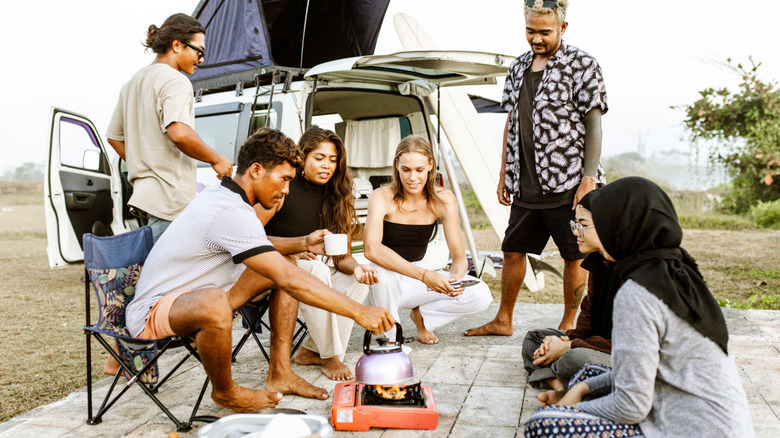If you drive an RV, you know there’s an endless amount of things to talk about with fellow campers, like the make, model, and design. But that’s not all. There’s the impressive carrying capacity, the hookups, and towing capacity. Does it have a ladder? A skylight? What kind of bedding do you use? Did you add a decorative backsplash? Wood accents? Artwork? Special appliances? There are so many different kinds of RVs out there, not to mention versions of their cousin, the campervan. You can customize them in infinite ways, and every little choice is a conversation-starter.
That’s just the vehicle itself, of course. You can also talk about the distance you’ve traveled, the things you’ve seen, and the people you’ve met. And engaging with the community can be a rewarding part of any journey. Even if you’ve meticulously planned a successful RV trip, driving these massive vehicles almost always comes with special encounters and challenges, and each little snag turns into its own story. Whether you’ve come across a washed out road, parked somewhere you shouldn’t have, or had a bear come to close to the rig for comfort, living to tell the tale is half the fun.
“Go beyond the nods and hellos,” wrote RVer Lawrence Chamberlin in a blog post on Medium. “I encourage conversations with your neighbors. Most RVers are eager to exchange stories and tips; I’ve learned about hidden hot springs, scenic routes, and even recipes, all through casual chit-chat. Asking questions or offering help, like lending a forgotten corkscrew, can forge friendships that last beyond the campground.”
Join the massive RV community of fellow travelers
If you’re new to RV culture, you may be surprised how popular the lifestyle has become. Per Statista, in 2023, about 10 million U.S. households owned an RV-style recreational vehicle. Of those, about 1 million households are the RV; the vast majority of these “modern nomads” are under the age of 45 and identify as millennial or Gen-Z, according to a survey by Progressive insurance. There is a growing population of itinerant and remote workers who live in their RVs and vans for at least six months out of the year, many of them with children. The trend has grown beyond the occasional #vanlife Instagram account and hardscrabble hermits of the 2020 film “Nomadland.” For many, a home-on-wheels has become a sustainable way to live and even raise a family.
This attitude is infectious, even if you have no desire to live on the road or you’re just dipping your toes into the experience with a rental. Campgrounds become de facto villages, where many RVers will park for days, months, or entire seasons. Campers exist in every state in the U.S., and travelers hail from across North America and every walk of life. The RV community is famous for its welcoming atmosphere and communal activities; it’s common to converse with new friends around fire pits and barbecues, and if you run into problems, there’s almost always someone around with tools and technical knowledge. This is especially true in popular RV parks with lots of amenities, since they attract such a variety of people, but you may forge great relationships during an overnight in a Walmart parking lot.




